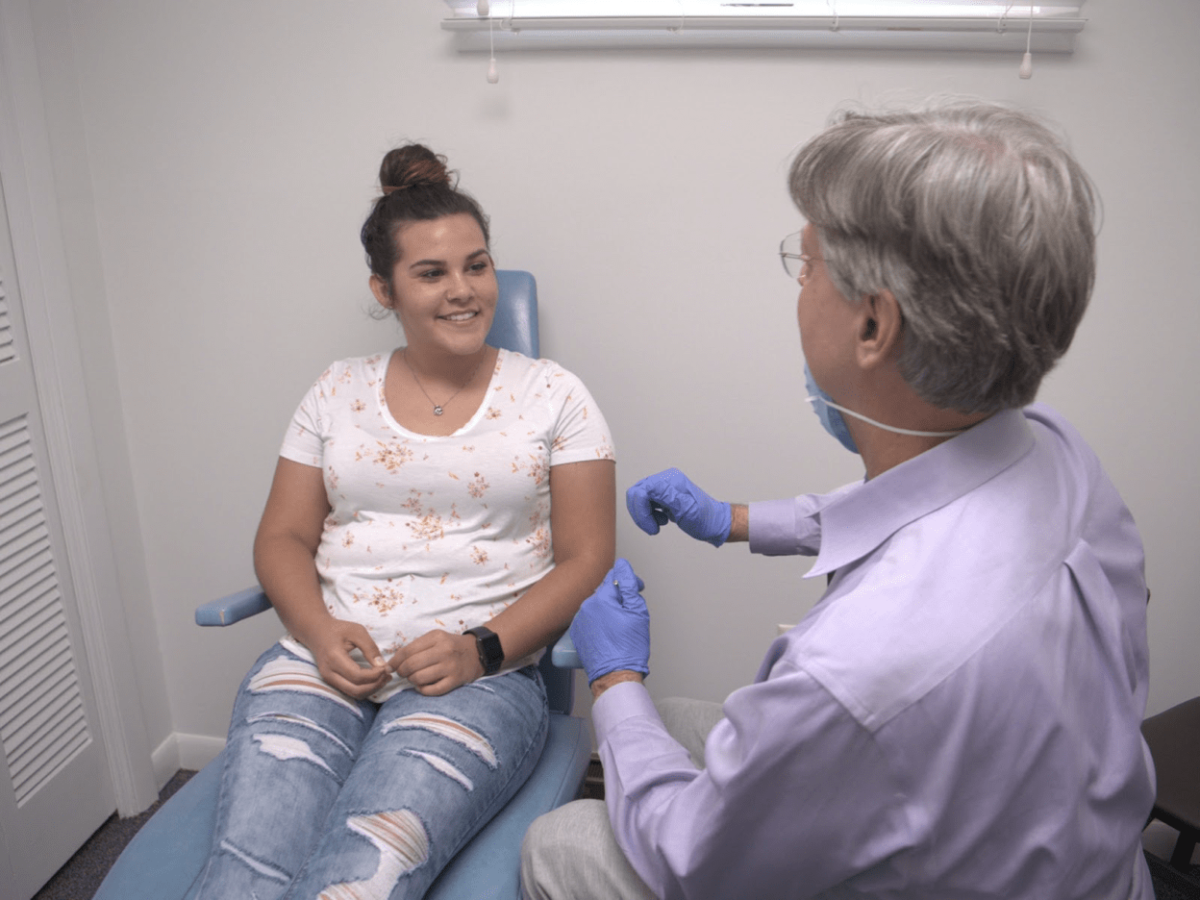Starting your braces treatment is exciting, but there’s the question: How long do you keep them on? There’s a lot of anticipation leading to the day your new smile is revealed, and everyone has a unique path in their treatment. There are a few factors to consider when planning how long you’ll be wearing your braces. Here at Hamer & Glassick Orthodontics, we want you to understand every step of your journey to a better smile. Let’s take a look at a few things that could determine the length of your braces journey.
What are you being treated for?
Everyone has different goals and treatment, but there is a general rule-of-thumb we can rely on for most of our patients. For example, if you have a complex case that requires more comprehensive care, your treatment time will likely be longer than someone who has only mild bite issues. Severely displaced teeth or significant bite problems often require more time to correct than simple spacing or crowding issues. The more work that’s needed, and the more complex that work is, the more time it will take for the treatment to be completed.
How does your body respond to the treatment?
Each of our visitors responds to treatment in different ways. Two patients with similar cases will rarely have the exact response to the same treatment. Gum tissue thickness, bone density, and chewing patterns vary between people, and oral habits such as clenching or grinding the teeth can affect treatment. It’s important to have an orthodontist who knows your specific needs. Dr. Hamer and Dr. Glassick take an individual approach with every patient that visits our office. They’ll build you a personalized treatment plan based on your unique goals.

Are you compliant with your treatment?
Your orthodontic process should be a collaboration between you and your orthodontist. Our doctors will attach your braces and prescribe the tooth movements associated with clear aligners. However, you have an important role in perfecting your smile too! How compliant you are with treatment guidelines can determine how long and how successful your treatment is.
The first part of treatment plan compliance is maintaining a strong dental hygiene routine. Your braces can better help your teeth if you keep them in healthy shape. Without good oral health habits, this can slow your treatment down. Orthodontic treatment may need to be paused if dental work needs to be done. It’s important to wear your elastics if you’re wearing braces. This means staying on top of your scheduled appointments with our team.
If you maintain a rigorous oral health routine and listen to your orthodontist, you can shorten the length of your treatment time. Another essential part of the process is meeting with your orthodontic team. Our experts will examine the movement of your teeth and make sure everything is on track. If you need to cancel or reschedule an appointment, let us know and we can adjust to your busy schedule! However, if you want to keep your treatment fast and steady, try to stick to the schedule as close as possible and make up for any missed appointments later.
Braces and aligners are important for creating your best smile, but they are also susceptible to damage. Any breaks, cracks, or snaps in your braces require fixing, and this can push your treatment schedule back. If you’re wearing braces, one way to avoid this is to avoid any crunchy or sticky foods, as these can weaken the bond strength of brackets or snap wires. A broken or loosened bracket is not considered an emergency, and may not need immediate attention. We want to rebond it as soon as possible. When a bracket isn’t properly bonded to your teeth, no active tooth movement occurs. This can add time to the treatment process, so be sure to contact our office if you experience any damage to your braces.
How old are you?
Your age can play a role in the length of your treatment. Teeth can move at any age, but children and teens can move their teeth more easily due to their bones being more pliable since they’re not fully developed. This is why braces tend to be more common in the teenage years. It allows for Dr. Hamer and Dr. Glassick to have more control over your bite correction. For older patients, however, treatment can take longer because we’re working with more developed teeth. The jawbone stops growing by our early twenties. Successfully treating orthodontic issues after that point may require more time and effort.
Our practice offers a wide range of treatments to move your teeth comfortably, efficiently, and as quickly as possible. While there will not be an exact end date for your treatment, the average time in braces tends to be anywhere from twelve to thirty-six months. Treatment with a clear aligner system like Invisalign can be slightly shorter.
There are many factors that can affect the length of treatment, and not just the ones listed above. Any of these could make your treatment longer or shorter than others. No matter how long your treatment takes, we can promise one thing: Our team of orthodontic experts will be there the whole time to make your final result the smile you want.

Trust Hamer & Glassick Orthodontics
It’s exciting as you work towards the day you achieve your perfect smile, and keeping your teeth clean under the treatment is a big part of that. Our office is here to help you out. Our experienced orthodontists have the education, skills, and training to give you a beautiful smile with long-lasting results you’ll love. There’s never been a better time to take the first step towards improved oral health, so get in touch today to schedule your FREE consultation with Dr. Glassick or Dr. Hamer!
